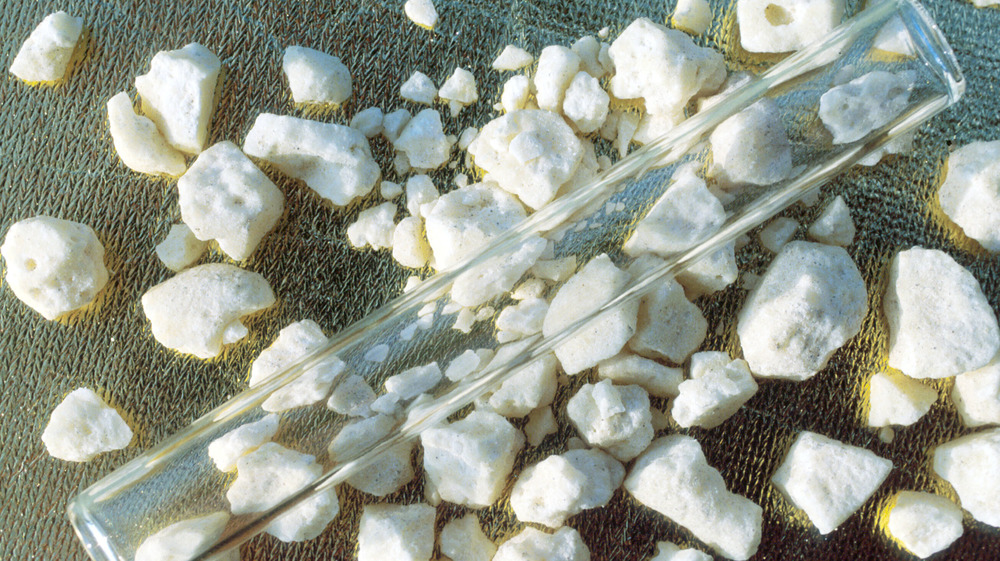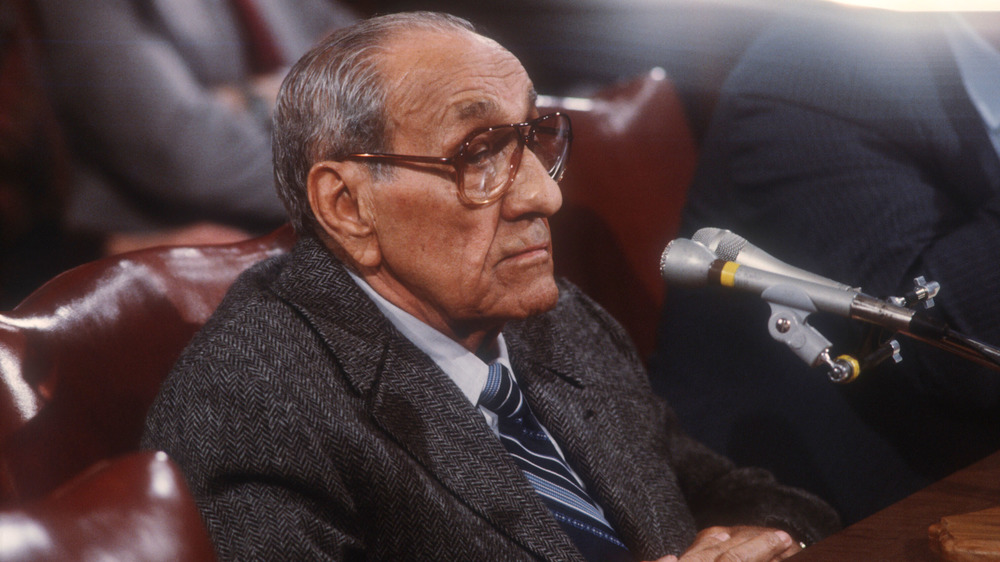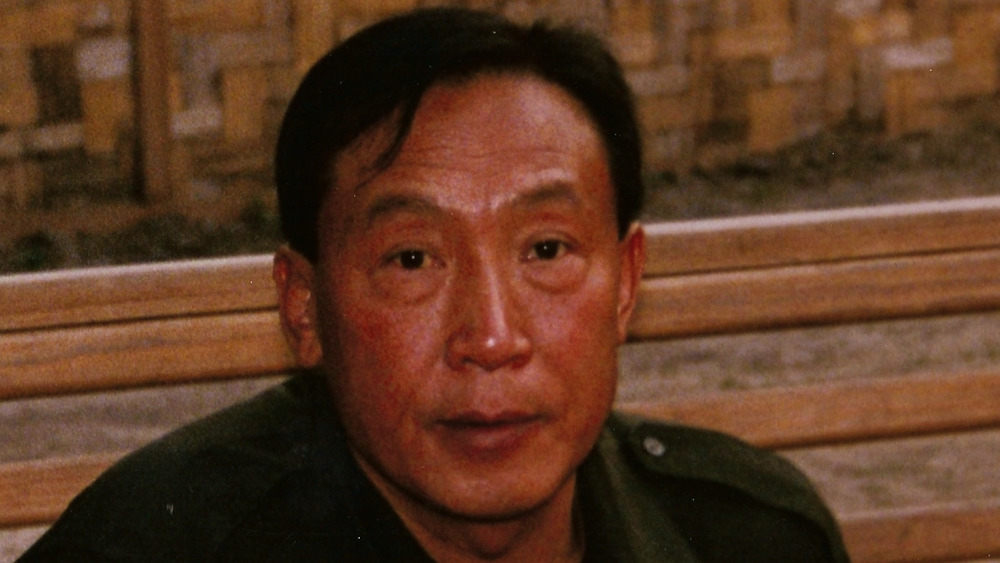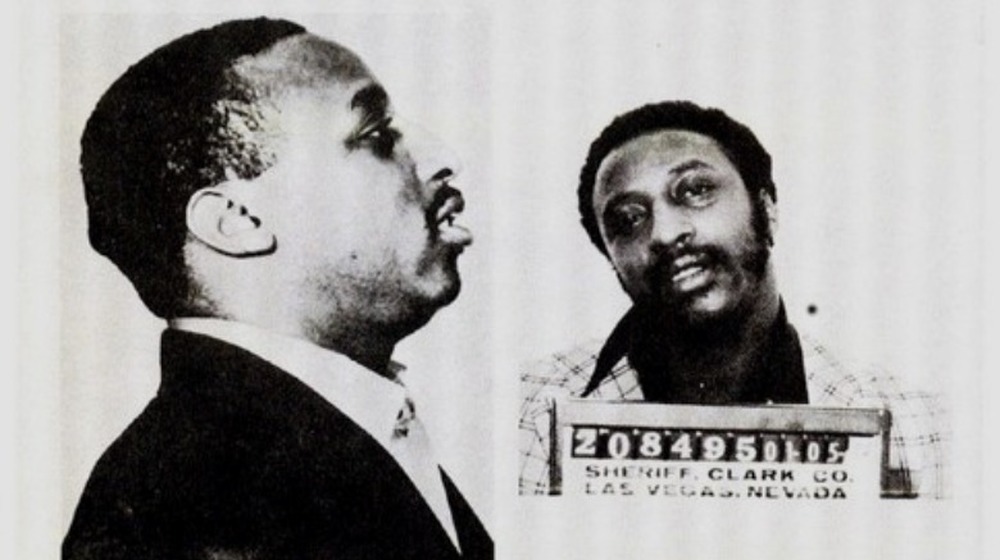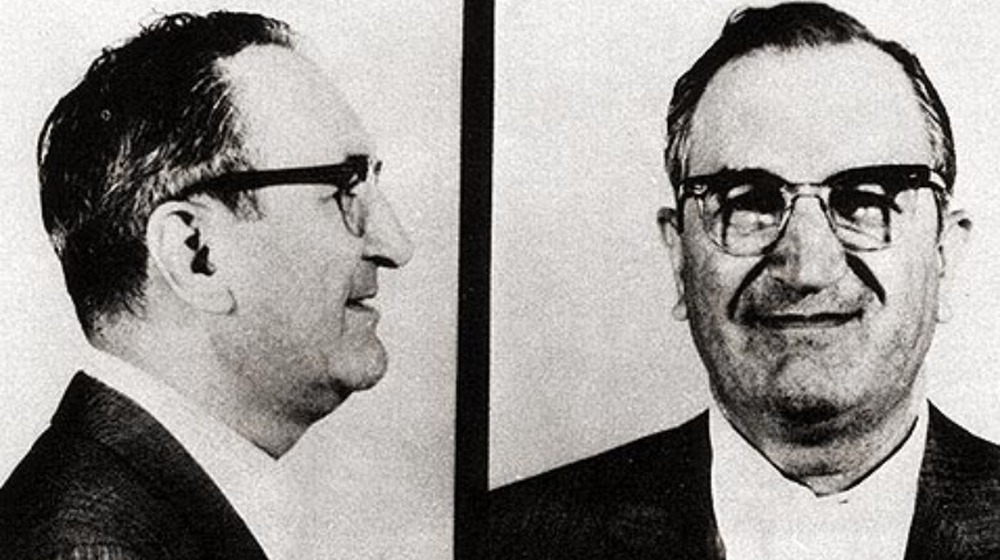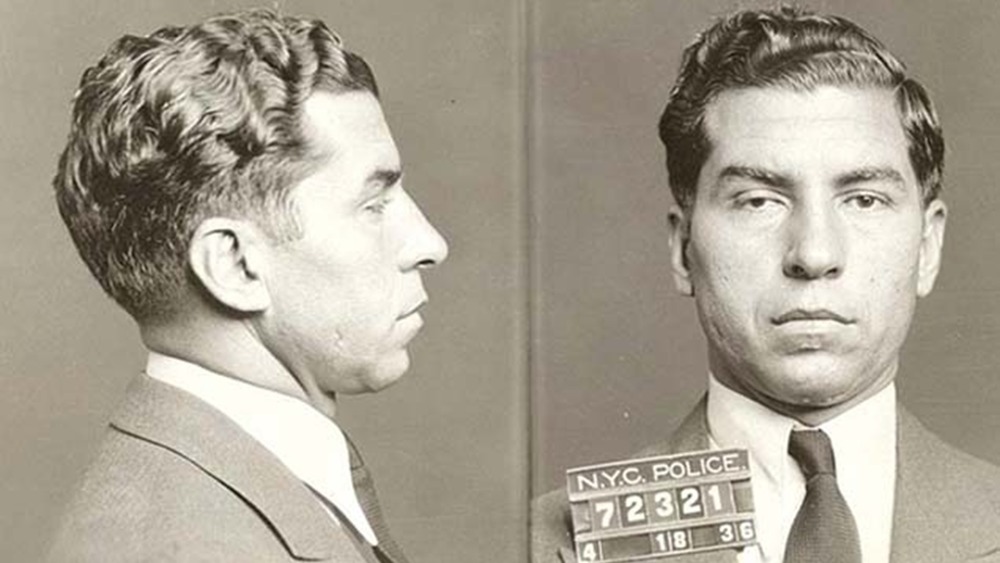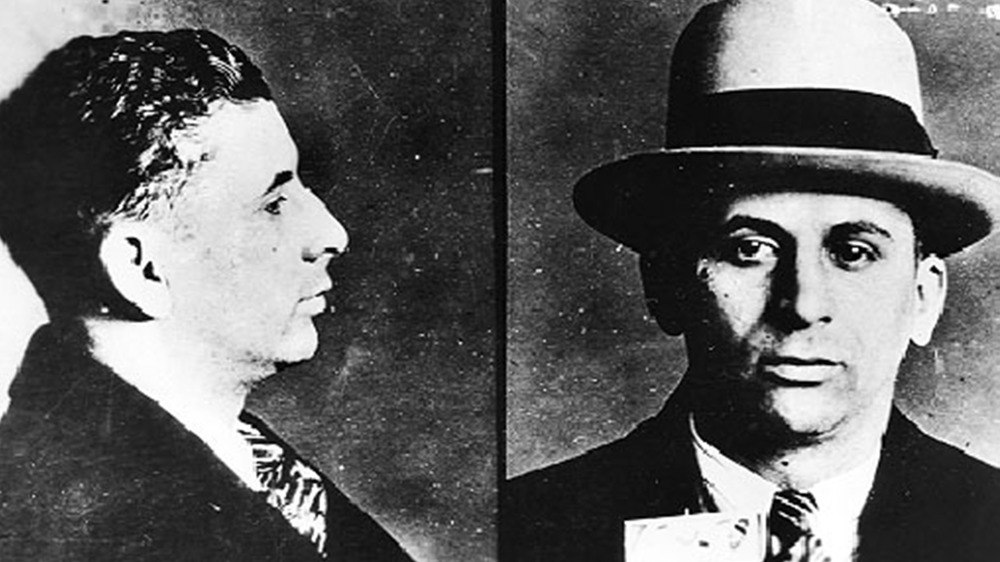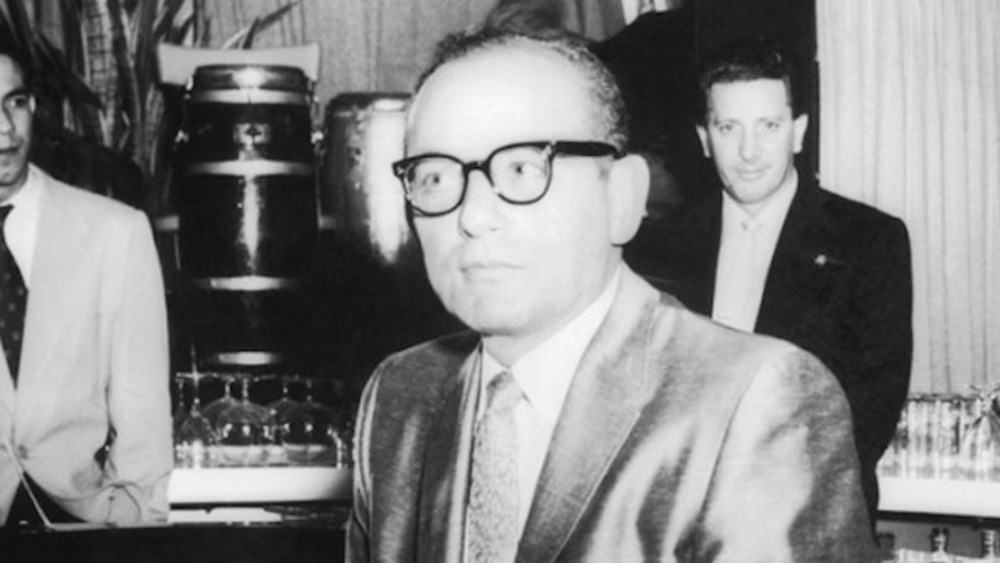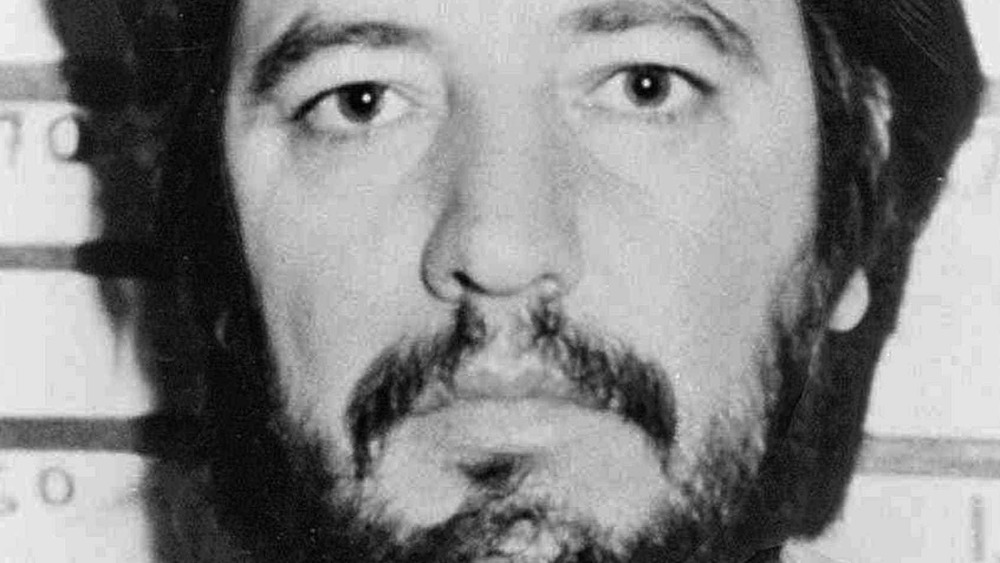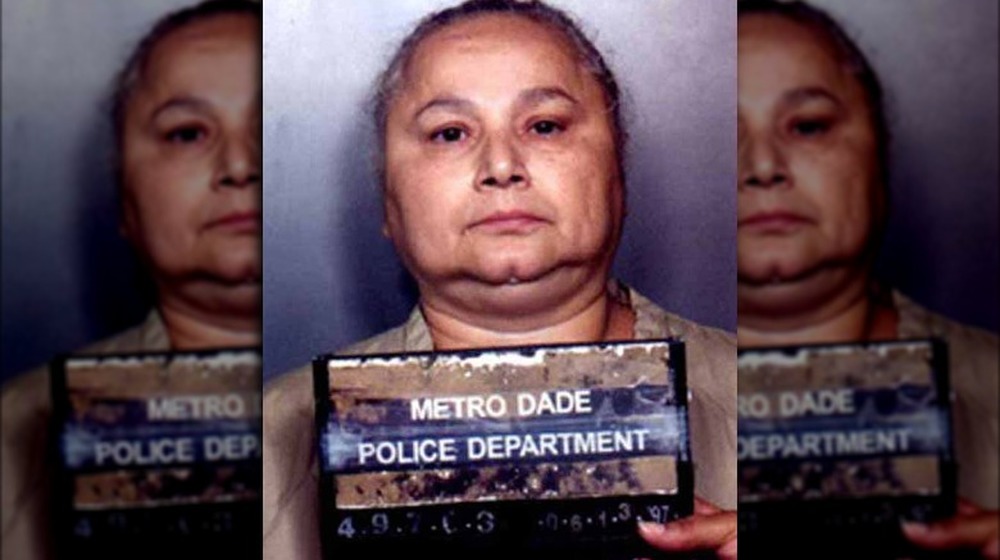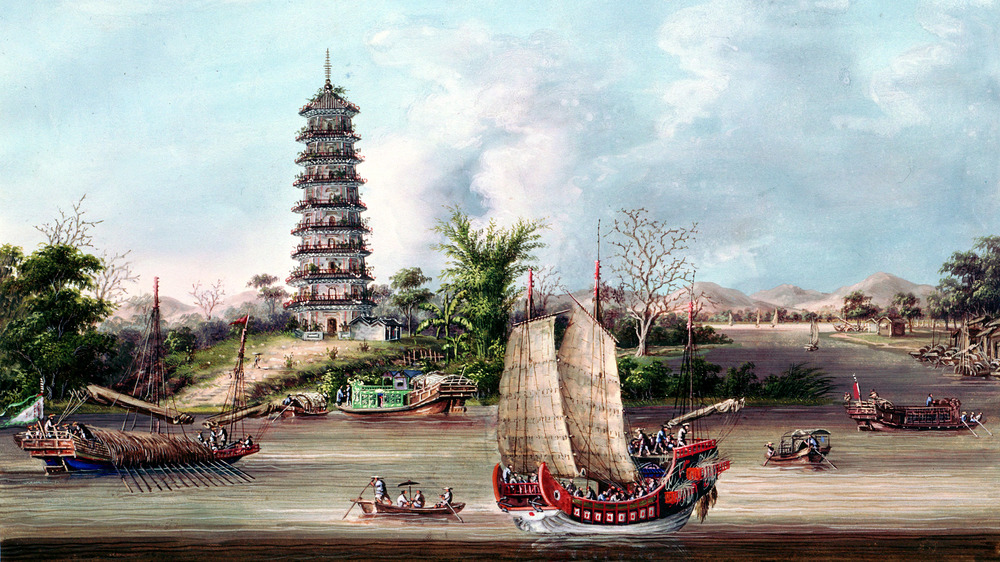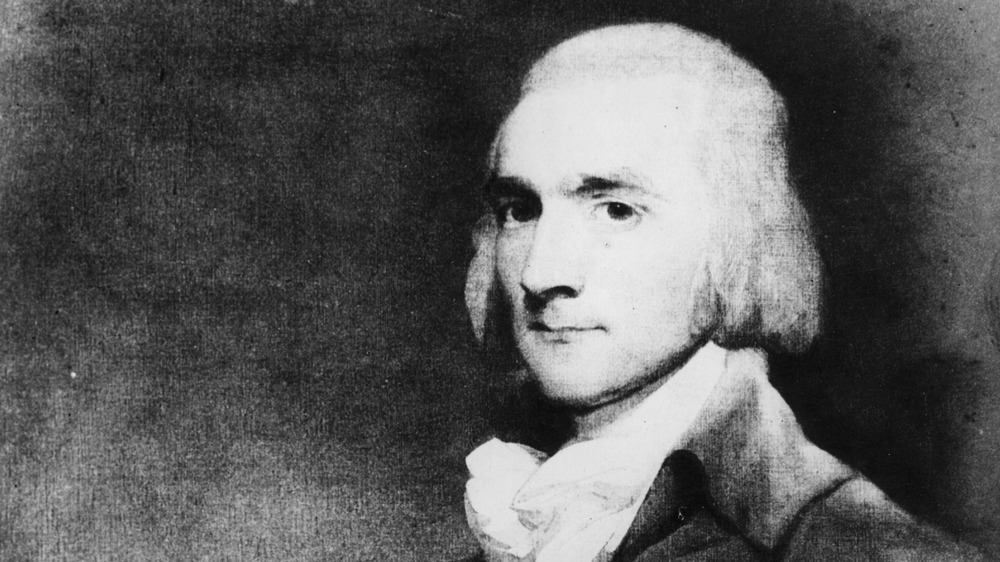These Drug Lords Were Never Brought To Justice
They say that crime doesn't pay and that justice is always served ... except in the cases of these individuals. Drug lords have been a fascinating part of society over the past century. Their "popularity" exploded in the film industry with classic Hollywood movies such as Little Caesar, The Public Enemy, and the original and remake of Scarface. The small screen has seen characters such as Walter White and Teresa Mendoza become fan favorites as audiences watch them build up their empires in the drug trade.
Biopics of Pablo Escobar, Henry Hill, and Al Capone routinely find themselves on-screen, living up to their iconic status as infamous kings of the drug world. However, even with these portrayals of both fictional and actual individuals, the story usually ends the same way, with the protagonist either in jail or forced into witness protection after being arrested and forced to flip on their cohorts.
Some drug lords, though, have found themselves escaping the long arm of the law. Some of these kingpins were either too smart or had too many connections to grow old in prison, while others met a not so surprising end before being picked up by the government. Still, one way or another, the following drug lords were able to circumvent the law.
Tony Big Tuna Accardo
In Chicago, the land of gangsters, there was only one big fish, and that was Tony "Big Tuna" Accardo. Bad puns aside, Antonino Leonardo Accardo got ushered into this life by none other than the top gangster in Chicago in the 1920s and '30s, Al Capone. According to Encyclopedia.com, in 1926, Capone met the 20-year-old Accardo, who had already been arrested eight times for bootlegging, and bought him into his gang.
Originally, Accardo served as Capone's chauffeur and screened visitors to Capone's hotel suite. He also developed into a ruthless killer under Capone. The Famous People reports that Accardo took part in two of the most infamous killings of the era: the 1926 murder of North Side Gang leader Hymie Weiss and the St. Valentine Day's Massacre of 1929. After Capone's arrest in 1932, Capone's replacement, Frank Nitti, allowed Accardo to form his own gang under Nitti's leadership and made Accardo the head of enforcement in the Chicago Outfit. Accardo had great success on his own and continued to gain more influence within the Outfit.
By 1943, Accardo was the head of the Outfit in Chicago, and he began to engage in dealing narcotics and also expanded the empire into Las Vegas gambling, according to Sun Signs. Unlike his early years, Accardo kept out of trouble with the law. He stepped down from the head position in 1957 after the IRS began to look into his business. Accardo passed away in 1992 at 86 years old.
Khun Sa
Khun Sa, according to Perspective Travel, went from being a peasant soldier to ruling a drug empire larger than Pablo Escobar and with more fame than "El Chapo" Guzman. Nicknamed "King of the Golden Triangle," Khun Sa's height in the 1980s saw him controlling 70 percent of the heroin business of Myanmar and financing an army to protect his operation, The New York Times reports.
Khun was born as Chang Chi-Fu in 1934. According to The Diplomat, Chi-Fu was recruited as a teenager to fight on the side of Chiang Kai-shek's Kuomintang army against Mao Zedong's communist regime in the Chinese Civil War. After the communists emerged victorious, Chi-Fu and much of the army fled to into the upland country where Burma, Thailand, and Laos met. Supported by the US, they became guerilla fighters against communist China. However, this was unsuccessful, and the soldiers wished to live normal lives. Chi-Fu had grown in stature in the area and found another interest: heroin poppies.
Renaming himself Khun Sa, meaning "Lord of Prosperity," the former soldier built a heroin empire. Even after being imprisoned for several years by the Burmese government in the early '70s, Sa rebuilt his empire, which reached its zenith the following decade. Sa had an extravagant personality and even offered to sell his empire to the US, according to History. He was also seen as a Robin Hood type, caring for his workers and locals. He died in retirement at the age of 73.
Frank Matthews
Like Jimmy Hoffa, Amelia Earhart, and D.B. Cooper, the disappearance of Frank Matthews remains one of the great mysteries of the 20th century. Nicknamed "Black Caesar," Matthews ran one of the largest heroin and cocaine operations in the United States, according to BlackPast. Still, he has become just as famous as a ghost as he was as a drug lord.
Born in Durham, North Carolina, in 1944, Matthews began his life of crime from a young age, leading a group of children to steal chickens in East Durham. After spending time in jail in Raleigh and Philadelphia, Matthews relocated to the Bedford Stuyvesant section of Brooklyn, New York. In the mid-1960s, he got into the cocaine and heroin industry, and despite being in the drug trade for less than a decade, Matthews built an empire and battled the old Mafia guard. According to the Raleigh News & Observer, Matthews' empire stretched to 21 different states and cut into the Italian Mafia's profit by taking control of international drug shipments.
In January 1973, Matthews was arrested in Las Vegas on charges of tax evasion and conspiracy to distribute heroin and cocaine. Though bail was originally set at $5 million, it was reduced to $325,000, which he posted in April 1973. When July came up and he was set to appear in a Brooklyn court, Matthews and his girlfriend, Cheryl Denise Brown, had vanished. According to the Mob Museum, the couple escaped with $20 million, never to be heard from again.
Joseph Bonanno
According to National Crime Syndicate, at the age of 19, Joe Bonanno snuck into the United States from Sicily and joined the Maranzano gang at the height of the Prohibition era. Seven years later, he became the youngest crime boss, turning the Maranzano Crime Family into the Bonanno Crime Family. His rise came following a bloody war, something he hoped to nip in the bud now that he was in his new position of power.
The New York Times reports that between 1931, when he became the boss, and the mid-1960s, "Joe Bananas" extended his empire from Brooklyn all the way to California, Arizona, and Canada. His main sources of income were loan-sharking rackets, illicit gambling, and heroin trafficking. Bonanno also had a major hand in forming the "Commission," a select group of Mob chiefs that sought to handle dealings internally. Bonanno served as the chairman. He was described as ”one of the people present at the creation of the whole thing — the American Mafia," by former NYPD detective Ralph F. Salerno.
Bonanno did not see the inside of jail during his time in power. It was not until well into his later years that Bonanno even saw a courtroom. According to American Mafia History, Bonanno was convicted of obstruction of justice in 1980 after he tried to block an investigation of his sons. He spent eight months in prison before being paroled. In 1985, he was given 14 months for contempt of court. Bonnano died peacefully at 97 years old in 2002.
Lucky Luciano
For someone who survived being stabbed, beaten, having his throat slit, and being left for dead, maybe "Lucky" is an appropriate nickname. According to Britannica, Charles "Lucky" Luciano went from a novice who spent half a year in jail for selling heroin at 20 years old to a Mob leader who could navigate his empire through different decades, in different countries, even from prison!
The Mob Museum says that Luciano "probably did more to create the modern American Mafia and the national criminal Syndicate than any other single man." In a span of four years from 1930 to 1934, Luciano went from an underling working for Joe Masseria, who was fighting a gang war with Salvatore Maranzano, to killing both in a skewed, calculating manner, forming the Genovese family with Vito Genovese, and beginning the national crime syndicate with his partners.
The syndicate moved to coordinate control of narcotics, sex work, bootlegging, loan-sharking, and labor union rackets, according to History. Even after being convicted of 62 charges of compulsory prostitution in 1936, which carried decades in prison, Luciano and partner Frank Castillo still ran his cartel from prison.
In order to tighten security on New York's docks during World War II, Governor Thomas Dewey asked him to have the Mob secure the docks in exchange for his release. The deal was made, and a decade after his conviction, Dewey commuted Luciano's sentence and deported him. He would spend the rest of his days continuing to have a major hand in drug trafficking into the US.
Meyer Lansky
Behind every great drug trafficking empire is a financier and calming voice to steady the room. This was Meyer Lansky to Lucky Luciano. According to The Mob Museum, Lansky's calm, even-tempered demeanor contrasted and counterbalanced the more hot-tempered members of the Mob syndicate. As "The Mob's Accountant," Lansky helped develop new moneymaking projects following the end of Prohibition, which forced gangs to find new avenues of revenue outside of bootlegging.
Born in Grodno, Russia, (now part of Poland) in 1902 as Maier Suchowljansky, Lanksy and his family emigrated to the United States in 1911, according to the Jewish Virtual Library. In 1920, Lansky met Lucky Luciano and Bugsy Siegel, and the trio would soon become three of the most powerful men in the world of narcotics. In 1931, the trio and Albert Anastasia murdered Joe Masseria, and soon, with the rise of Luciano and Seigel, Lanksy was propelled to the top of the Mob as the planner behind the scenes.
Lansky helped organize many of the national crime syndicate's operations, which included drug smuggling, pornography, sex work, and extortion. One operation that he has become synonymous with was casinos, which he and the syndicate built up in Las Vegas. In 1970, Lansky was forced to flee to Israel to avoid being arrested for income tax evasion. He was extradited back to the United States, where he was acquitted. Lansky died of lung cancer in 1983 with less than $35,000 in his bank, though it is believed he had hidden between $300 and $400 million.
Sam Giancana
Behind every great president is a seedy mobster who has been rumored to have both helped elect and assassinate that president. Yeah, that saying doesn't really work. Still, the fact that Sam Giancana has been tied to both the election of John F. Kennedy as well as his assassination illustrates the power he held in the underworld of Chicago. And like so many Chicago-based gangsters, Giancana's origins lie with Al Capone.
According to Biography, by the time Giancana was 20 years old, he had been the prime suspect in three different murders. He was never tried for any of them. As he continued to climb in the Chicago Mob world, Giancana routinely found himself in and out of jail for lesser charges. Britannica reports that Giancana was arrested more than 70 times during his life and served just under a decade in prison for various charges.
According to The Mob Museum, in 1957, after Tony "Big Tuna" Accardo stepped down as the head of the Chicago Outfit, Giancana succeeded him. In this position, it is believed that Giancana assisted in fixing the votes in Chicago to ensure that John F. Kennedy won the state and the 1960 presidential election. It is rumored that because of Bobby Kennedy's continuous war with the Mafia, Giancana had JFK assassinated. Giancana was also rumored to have taken part in a plot to assassinate Cuban leader Fidel Castro. In 1975, Giancana was murdered before he could testify before the US Senate Intelligence Committee.
Amado Carillo Fuentes
Talk about keeping it in the family. Amado Carillo Fuentes learned the drug game from his uncle, Ernesto Fonseca Fuentes, the leader of the Guadalajara Cartel. Both are portrayed in the Netflix program, Narcos: Mexico. Early in his career under his uncle, Amado took care of fields of marijuana and served as a "mule" for transfers, as stated by Infobae. The Sun reports that Amado became the head of the Juarez Cartel by killing his friend and former boss, Rafael Aguilar Guajardo.
According to Crime Museum, Amado was referred to as "The Lord of the Skies," as he was the first drug lord to use private planes to transport cocaine across the world, as well as the fact that his riches allowed him to own multiple planes. He used high-tech surveillance technology to spy on his opposition and was preparing to move his business to the US by the time of his death.
In July 1997, as he was being tracked by both the US and Mexican governments, Amado went under the knife to have plastic surgery to change his appearance. The surgery went awry, and Amado, hoping the new appearance would keep him safe, died on the operating table. The doctor and his two assistants were found dead in November that year. In spite of rumors from family members, "The Lord of the Skies" was confirmed dead by the US Drug Enforcement Agency. According to Celebrity Net Worth, Amado was worth $25 billion when he died.
Griselda Blanco
"Why be a kingpin when one could be a queenpin?" At a young age, Griselda Blanco was forced into a life of crime and sex work, according to Biography. By the height of her career, she had been given the nickname "The Godmother," had become a major figure in the Medellín Cartel, and had both mentored and gone to war with Pablo Escobar. Even in prison, she continued to run her empire with the same brutality as before.
According to A&E, at the age of 11, Griselda committed her first murder when she helped kidnap and execute a ten-year-old boy. She married her first husband and had three sons before the pair divorced. Blanco is suspected of having him killed, too. Blanco's criminal life took a big step when she married her second husband, a drug trafficker named Albert Bravo. The couple's business exploded as Blanco snuck cocaine in her bras and girdles. In 1975, though, Blanco killed Bravo, believing he was stealing money. The murder earned her the nickname "Black Widow," according to Britannica, and she took full control of the operation.
At her height in the 1980s, Blanco made about $80 million monthly. Her ruthlessness turned Miami into a war zone in what became known as the "Cocaine Cowboy Wars." In the late 1980s, she began a 15-year prison sentence on lesser drug charges (she was reported to have been involved in over 200 murders) and retired in Colombia after her release. In 2012, the 69-year-old retired drug lord was gunned down in Medellín.
John Perkins Cushing
During the end of the 18th century and the beginning of the 19th century, Europe and the United States looked to expand their commerce profits in the Asian market. However, the US and European trading markets took a big hit in 1799, when the emperor of China banned opium. Long before smuggling drugs by plane, there was Perkins & Company smuggling opium on trading boats in shipments of rice, according to the National Museum of American History.
Born into a wealthy Boston family in 1787, John Perkins Cushing was orphaned at a young age and raised by his uncle, Thomas Handasyd Perkins, a wealthy slave trader and opium smuggler. According to House His Tree, Cushing, at only 16, relocated to Canton, China, to work in his uncle's counting house and established Perkins & Co. in 1806. Cushing imported rice to China during a famine, traded in fur, and loaned money to merchants during the War of 1812. However, some of his best profits came with importing opium into the country.
WBUR reports that while opium was legal in the United States, it was still illegal in China. Nonetheless, the uncle/nephew pair, according to one letter sent, imported as much as 150,000 pounds of Turkish opium at a time into Canton. In 1827, Cushing left China to return home to Boston, consolidating the business with Russell & Co. China would continue to struggle with outsiders smuggling in the drug, leading to the Opium Wars in the following decades between the nation and Great Britain.
John Jacob Astor
Long before the days of submachine guns and air travel to traffic drugs, before the fast cars and high-tech surveillance technology to spy on kingpins, there was John Jacob Astor: the original drug lord. Okay, maybe not, but History refers to Astor as "America's First Multimillionaire," and he built his empire on the drug of the day, opium.
Similar to Cushing, Astor found success in trading furs and was affected by the rising political tensions that resulted in the War of 1812. According to The Vintage News, the war's negative effects on his business led Astor to become more receptive to illegally selling and trading opium in China. In 1816, Astor bought ten tons of Turkish opium, which he traded in China for goods he resold in the United States.
Between 1816 and 1825, Astor took part in the opium trafficking in China. Around three million people in China smoked opium by the 1830s, and that number would balloon to ten percent of the population by the end of the century. However, the majority of Astor's money came from fur trading. Once the US Congress passed a law preventing foreign fur traders from entering the nation, Astor could rely on his main business and left the drug smuggling industry. By the time of his death, Astor was worth an estimated $20 million, which, adjusted for inflation, would be over $100 billion today.
